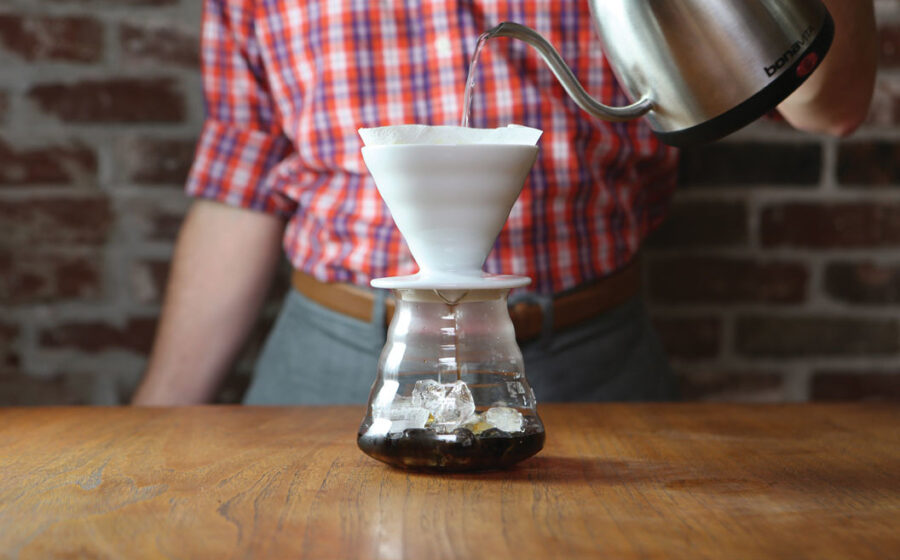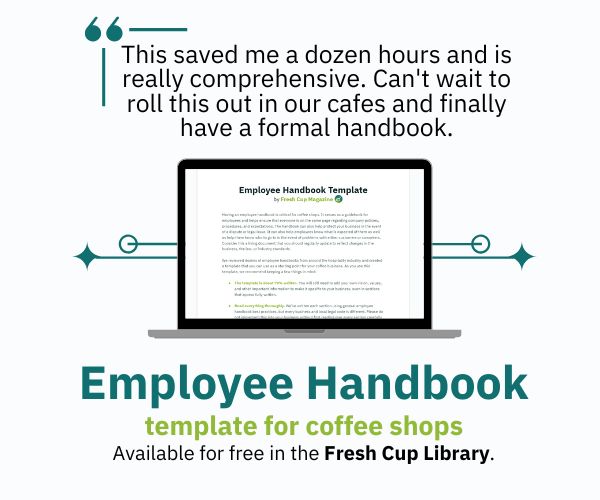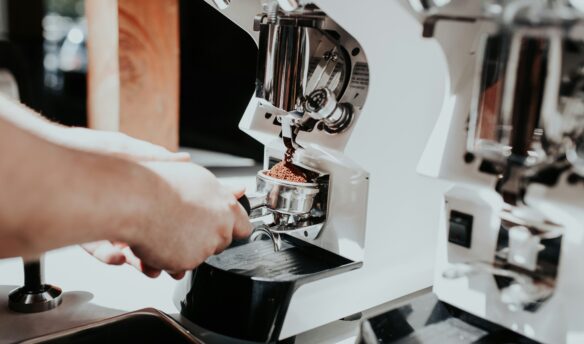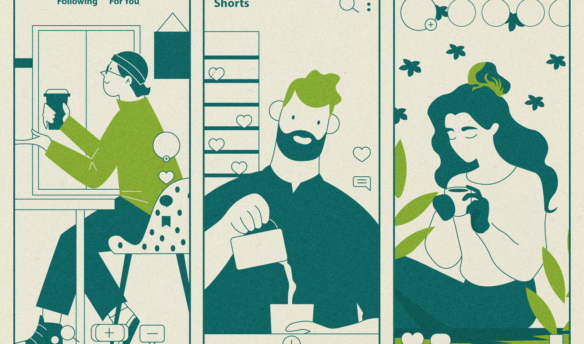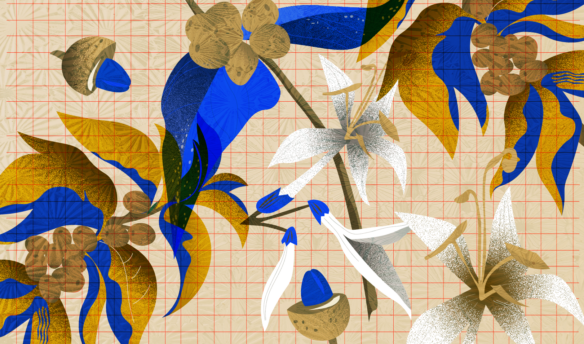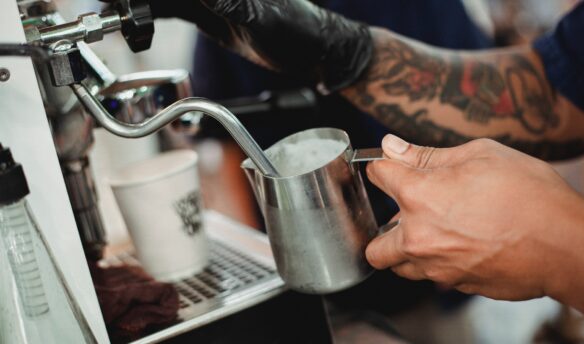[M]y uncles recently reminded me that my grandfather drank iced coffee every day. Sometime before noon, the Giuliano household would make the switch from coffee to iced coffee, which meant that the coffeemaker was simply switched off and the coffee from the morning was—unceremoniously—dumped over ice. Although this was not optimal in terms of flavor, that wasn’t the point. Iced coffee was a thrifty drink, a sober and energizing one. My grandfather drank it with sandwiches or hard biscotti, and when he left the house he had a thermos of it with him.
As a young coffee drinker, I enjoyed espresso and piping hot single origins and completely forgot about my grandfather’s iced coffee habit while I explored the nuances of coffee flavor. I tasted tobacco in Indonesian coffees, black currant in Kenyan ones, and the intoxicating floral-lemon of great Yirgacheffes from Ethiopia. While on this journey, as a San Diego barista in the early nineties, I would serve iced coffee thoughtlessly. Often, a plastic jug would be filled with leftover coffee at the end of the day and put in the fridge to cool overnight. This was iced coffee for caffeine junkies only: bitter, stark, and intense. The customers who ordered it were either wild-eyed truck drivers who drank it straight or cream-and-sugar fanatics looking for a coffee ice cream equivalent.
Just today in my kitchen, I made excellent aisu kohi using the following recipe: 32 grams of Peru Cajamarca Cenfro from Spyhouse Coffee, 300 grams of water (I use very soft water to brew with—only 80ppm or so), 200 grams of ice cubes (made with that same delicious water). Just put the ice in the carafe, and brew as you normally would, shooting for a three to four minute extraction. That’s it. Invoking my introduction to the Japanese method, I serve in a chimney glass, and if sharing with someone who has a sweet tooth, accompany with simple syrup and light cream on the side.
Then cold-brew coffee systems began to appear, designed to extract coffee overnight with room-temperature water, creating a coffee concentrate that was sweet and thick, heavy and syrupy. Cold brew lacked the acrid roughness of leftover “iced coffee,” however, it did not inspire me. It was fine paired with milk or cream, but it lacked the intoxicating complexity of the coffees I was discovering. I stuck with hot coffee, even in the San Diego summertime.
Then, in 1994, I visited Japan for the first time. There, iced coffee (called aisu kohi) was ubiquitous. Every pastry place served iced coffee, in a tall chimney glass with a tiny pitcher of liquid sugar on the side. Japanese coffee drinkers would sip it in the afternoon, chatting and eating sweets. I ordered one just to explore. I was expecting the battery-acid flavors I’d become accustomed to back home, but instead I discovered a completely different drink—clear and crisp, multilayered and transparent, refreshing and complex.
Aisu kohi opened my eyes. It was clearly a beverage with as much complexity and nuance as the single origins I most enjoyed. I drank aisu kohi whenever I could for the duration of the trip. It wasn’t always as good as that first time, but it was always—always—better than any iced coffee I had ever had in the States.
The dilemma that arose after my travels in Japan was how to recreate that first, life changing iced coffee. It definitely wasn’t leftover hot coffee and it definitely wasn’t cold brew. For years I tried to figure it out—difficult in the pre-Internet era. Finally, I met my teacher. Hidetaka Hayashi of the Hayashi Coffee Institute became a friend and a mentor, and he patiently answered my questions about Japanese iced coffee, its history, and techniques.
When Hayashi showed me pictures of equipment designed specially to brew aisu kohi, I learned that most often, the equipment was designed to chill hot coffee instantly, with hot coffee brewed directly onto ice, the chilling and diluting effects incorporated into the recipe. I began to experiment with pour-over drippers, simply filling my carafe with ice and letting the coffee drip in.
The difference was instant and exciting. I caught a glimpse of the coffee I had tasted in Japan. I fiddled with the recipe, understanding that I could substitute between twenty and fifty percent of the brewing water in a recipe with ice in the carafe and not dramatically change my extractions. And, best yet, I was tasting the coffee: bright, crisp Yirgacheffes; solid, chocolate-toned Guatemalans; currant-like Kenyans. It was glorious.
I have been an evangelist for this technique ever since. What I love is its simplicity: find a brewer with which you can drip coffee directly onto ice (most drip brewers work fine for this), and subtract thirty to fifty percent of the brew water, replacing the same volume of water in the form of ice in the carafe. I vary that percentage according to the coffee or roast and the extraction I desire.
I’ll be forever grateful to Hayashi-san for teaching me the secret, and helping me to enjoy iced coffee more than I can even describe. And I’m pretty sure my grandfather would be proud.
—Peter Giuliano is director of the Specialty Coffee Association of America’s Symposium.

